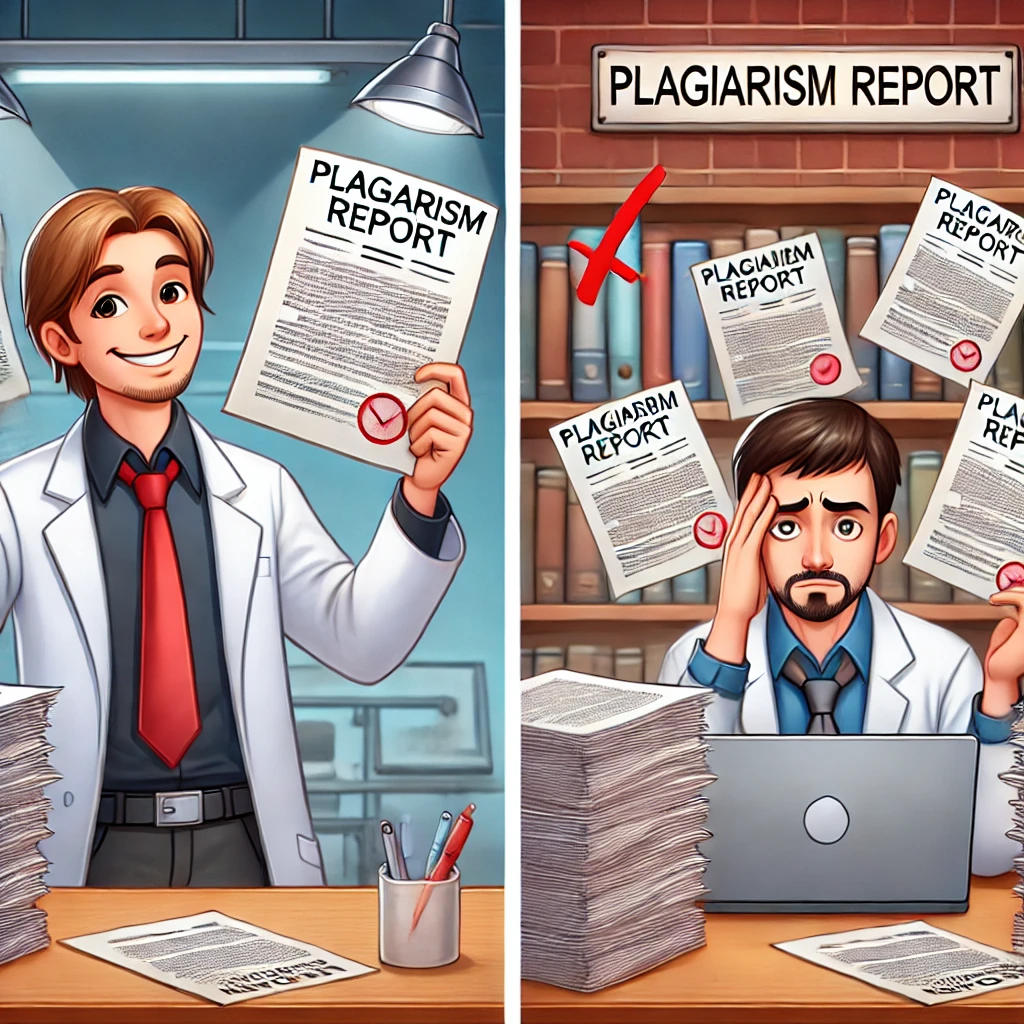Final Step of Academic Writing: Plagiarism Checking and Removing

Plagiarism detection has become an essential step in academic writing, research, and content creation. Many students, researchers, and professionals wonder: When is the best time to run a plagiarism check? While some might think of checking multiple times during the writing process, the most effective and cost-efficient approach is to check for plagiarism at the very end, after all revisions, formatting, and final touches have been made.
In this article, we will explore the reasons why plagiarism should be checked only at the last stage and why making changes after a plagiarism check can lead to problems.
Why checking Plagiarism before completing the work is ineffective
Many assume that checking plagiarism before completing their work helps them stay original from the start. However, this approach is flawed for several reasons:
- Your Content Isn’t Final Yet: If you check plagiarism in the middle of writing, any changes you make later could alter the plagiarism percentage.
- Plagiarism Reports Can Change: Even small edits like rewording, adding citations, or restructuring sentences can affect plagiarism detection software results.
- It Wastes Time and Money: Many universities and plagiarism-checking services limit the number of times you can scan a document. Running multiple checks throughout the process wastes these opportunities.
💡 The best practice is to complete your writing, edit thoroughly, and then run the plagiarism check as the final step.
Universities and Institutions have limits on Number of Plagiarism Checks
Many academic institutions have strict rules about how often students can check their work using plagiarism detection software. This is especially true for tools like Turnitin and Drillbit where universities set restrictions on the number of submissions.
Why Does This Matter?
- Limited Free Checks: Some universities provide students with only a few plagiarism checks per semester.
- Once Submitted, Reports May Be Saved: Some systems save previous scans, meaning multiple checks can flag your own work as plagiarized.
- Avoiding Institutional Penalties: If you exceed the allowed number of checks, you may not be able to check your final version before submission.
🔹 By running your plagiarism check only at the end, you ensure that your report is accurate and that you comply with institutional policies.
Even minor formatting changes can affect Plagiarism reports
Did you know that small formatting adjustments like changing fonts, line spacing, or adding images can influence plagiarism reports? While these changes should not increase plagiarism, but they seem to alter the way plagiarism detection software scans the text.
Common formatting changes that affect reports:
- Changing font type or size
- Adjusting margins, line spacing, or paragraph indentation
- Inserting or deleting figures, graphs, charts, or tables
- Moving sections of text around in the document
💡 To avoid unnecessary inconsistencies in your plagiarism report, always make formatting changes before running a final plagiarism check.
Turnitin and Drillbit detect even small additions and deletions
Plagiarism checkers work by comparing a document’s text against vast databases of published work, student submissions, and online content. Even slight modifications can alter plagiarism scores.
How small edits can impact a Plagiarism report
- Adding a new paragraph may introduce text that is flagged as similar to an existing source.
- Inserting an image or graph could cause changes in formatting that affect scanning.
🔹 Checking plagiarism only after finalizing your content ensures that you won’t need to run another scan.
Cost-Effective Approach: Save Money by checking only once
Many plagiarism-checking tools charge per scan or offer limited free scans. Running multiple checks throughout the writing process can quickly become expensive.
Why Checking at the End Saves Money
- You don’t waste multiple paid scans on unfinished drafts.
- You ensure that the final version is the one that gets checked.
- You avoid unnecessary expenses from rechecking minor edits.
💡 A single plagiarism check at the end ensures you only pay for what truly matters—the final, polished version of your work.
Plagiarism Removal should be the Final Step
Once plagiarism has been detected and removed, no further changes should be made to the document.
Why This is Crucial:
- Even minor edits can reintroduce plagiarism: If you add content after fixing plagiarism, it may contain new issues.
- Universities check only the final submission: If your final submission differs from the version you checked, the results could be different.
- Editing after a final plagiarism check can lead to unintended issues: Any modifications might affect citations, references, or content originality.
💡 Always ensure that your document is 100% finalized before running a plagiarism check.
Conclusion: The Best time to run a Plagiarism Check is at the end
🔹 Key Takeaways:
Checking plagiarism at the beginning or during writing is unnecessary and ineffective.
- Formatting changes, even minor ones, can affect plagiarism reports.
- Universities often limit the number of checks allowed.
- Running multiple checks wastes time and money.
- Plagiarism removal should be the last step before submission.
📢 Final Tip: Once you run your plagiarism check and make necessary edits, do not modify your document further. This ensures that your final submission is exactly the same as the plagiarism-checked version.
💡 Want to ensure your work is 100% original and avoid unnecessary re-checks? Use our Drillbit plagiarism checker or our Turnitin plagiarism checker for a final, accurate plagiarism report! 🚀

